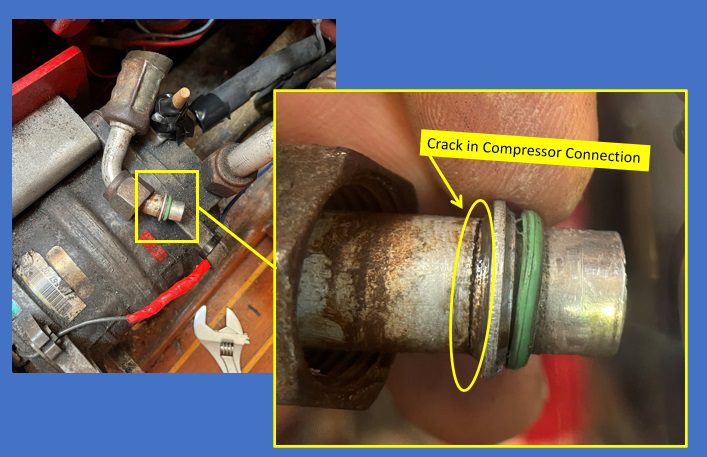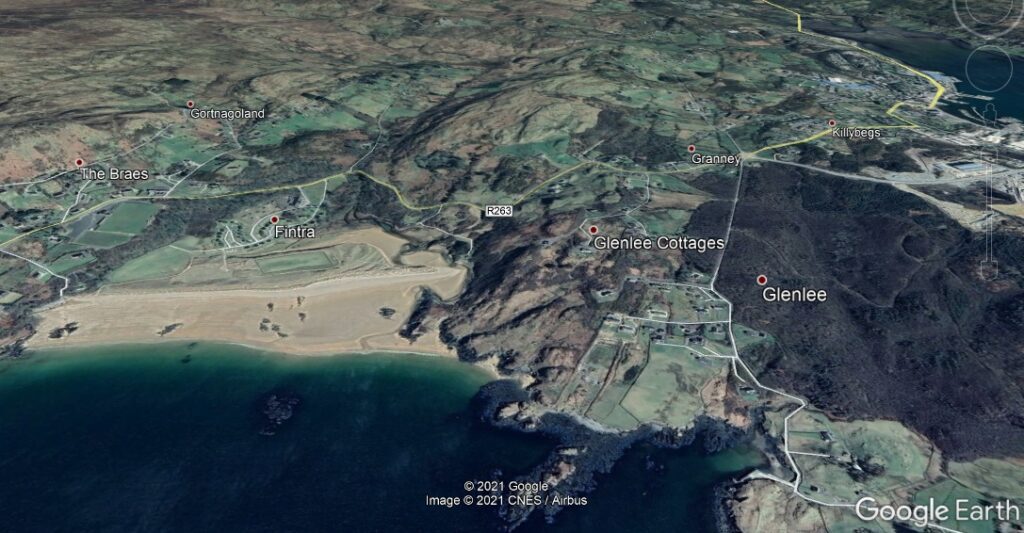Repairs
Tuesday, July 28, 2021
(Late entry, waiting to board my return flight to the US)
Dublin Airport, Ireland
Repairs
I’m currently sitting in US territory in the Dublin airport, where you clear customs to the US while still surrounded by Ireland. Originally my wife was to join me in Scotland and we would travel about, including visiting my niece and her husband, the original inspiration for sailing to Scotland. Due to COVID plans have changed.
Crew members David Carstens and Brimmer Sherman are also heading back to the US today. We ended up spending 11 days in Killybegs with the boat securely tied up to the town dock. Much of that time was spent making repairs and getting her ready for the next leg south to the Canary Islands. My checked luggage has a collection of broken hardware to be repaired or replaced in the US and then brought back to the boat upon my return to Killybegs at the end of the month. Twenty-four days crossing the North Atlantic on a nearly 40 year old sailboat had exacted a toll on her, including:
- A sheared slide bolt securing the gangway
- A cracked connection to the engine coolant reservoir
- A tattered foresail.
- A failed shaft on the self-steering rig
- A cracked elbow to the refrigerator compressor cracked
- A broken nipple on the water-maker boost pump
The sheared slide bolt was one of several minor issues and easily fixed once we arrived in Killybegs and had access to the Mooney Boatyard chandlery that supplies the large fishing fleet.
The cracked connection to the engine coolant reservoir was discovered early in the crossing during a routine engine check. This was also relatively easy to fix using on board epoxy, but could have been potentially serious if unchecked.
The failure of the connecting rod on the Monitor mechanical autopilot occurred about 10 days before we made landfall. It was simultaneously the most inconvenient and the luckiest failure we had in that we were able to retrieve all the parts. The Monitor has a heavy metal blade that sticks down into the water at the end of a 1 1/4 “ diameter stainless steel shaft. As we were adjusting it for the next watch, Dave and I looked back in shock to see that the shaft had sheared in half and the blade was trailing behind the boat, attached only by a frayed tether. We gingerly reeled in the line, like a tentatively hooked fish, and were able to land the blade back in the boat. This was not something we would be able to fix at sea and would have to sail the remainder of the trip using a combination of hand steering and the electrically driven autopilot. The electric autopilot is known semi-affectionally as “HAL” from 2001, due to his tendency to have a mind of his own. HAL is reasonably good at holding a course, but in heavy seas he puts a load on the batteries that requires running the engine each day for at least 45 minutes to replenish the energy consumed.
Short term HAL is a good back-up, but neither ascetically or environmentally pleasing. Being a sailboat, we like to use the engine as little as possible. Throughout the crossing we motored only a little over ten hours. The remaining 40 hours of engine time was used for housekeeping, i.e. running the engine to drive the refrigerator compressor and charge the batteries to run the water-maker, keep the lights on, and feed HAL. I very much wanted to have the mechanical autopilot fixed for the next long leg.
Fortunately, the mechanics at Mooney Boatworks in Killybegs offered a creative solution by trimming and machining a larger diameter pipe down to the proper size and it will be ready to go.

As for the refrigerator compressor and the boost pump for the water-maker, they could not have failed at a more opportune time or place. The compressor failed the same day we tied up to the dock, and the water-maker shortly thereafter. In theory, we could have made it across the Atlantic without either.
The boat has ample dried and canned goods on board to feed us for at least a month, but the refrigerator/freezer was very much appreciated for the first 10 days of the trip to preserve the fresh produce and frozen goods and after that it was used to cool items with longer shelf life cool, like cheeses, condiments, eggs, and drinks.
(The refrigerator was sorely miss at the dock in Killybegs since we were living on the boat and had no way to cool our beer except with bagged ice. Unfortunately, due to the unusually warm temperatures in the regions, the local stores were out of ice most of the time. This predicament generated much sympathy from the local HVAC repairman who did his best to repair it but, alas, it still needs a part.)

As for water, the boat has two 70 gallon tanks but we prefer to reserve that water for showers and washing dishes and use the fresh water created by the reverse osmosis water maker for drinking. If either the refrigerator or the water maker were to have fail while at sea it would have made for a more difficult trip. New parts were not immediately available in Killybegs and these are the broken parts are now in my checked luggage. Replacement parts will be ordered once in the US, then carried back to Ireland for the boat.

Given the variety of equipment failure, it was a stroke of luck that we had diverted to Killybegs. It would have been very difficult if not impossible to get those repairs done elsewhere. The most challenging of those repairs to accomplish was mending the tattered genoa.
The genoa is flown at the front of the boat, providing much of her power in combination with the mainsail. A panel along the sail’s trailing edge came unstitched with over a week to go to Ireland, causing us to reluctantly sacrifice speed and rely instead on the smaller staysail just aft of it. Once in Killybegs, finding someone to mend the genoa proved to be difficult. As the largest fishing port in the British Isles, Killybegs is well equipped to supports large fishing vessel but not so much sailboats. They had no sail repair facilities.
Getting the genoa repaired in Killybegs would not have happened without the help of Jim Parkinson, Managing Director of Sinbad Marine Services in Killybegs. A couple of days after our arrival he walked down to our end of the floating docks to welcome us and asked if we needed any help. We’d already been given several contacts for the various needed repairs. Jim reviewed our list and noted that the business listed for sail repair was actually a rigger and that the closest sail maker was 2 ½ hours away in Galway. He added that they were overbooked this time of year. Just getting the sail there would be a problem, given that it folds up to be larger than a military duffel bag and weighs more than 50 lbs. I was at the point of considering whether it would be feasible to fly it back to the US for repair, when Jim offered to arranged to have the sail picked up and transported to and from the sail maker. A very much appreciated solution.
Not only did Jim help us with the sail repair, but he and his partner Eimear Stafford sailed us over on their catamaran for a day at nearby Fintra beach. Fintra beach is an expansive stretch of sand that slopes gently into the Donegal bay. The length of the beach was populated with dozens if not hundreds of bathers enjoying what was reportedly a very rare sunny day in Ireland. A young man at the top of the beach was selling soft gelato from his bicycle propelled freezer. Sunbathers were offering up pale skin to the burning rays of the hot sun. Parents were teaching their children how to swim and warning them to avoid the numerous jelly fish. Other children were busy digging holes in the sand. The unusually warm 68 degree water was filled with bathers as I was falling flat on my face trying to learn how to paddleboard at the insistence of Jim and Eimear. It was thoroughly enjoyable day followed by and even more memorable diner at their house with its expansive view of the harbour and Donegal Bay beyond.

It is an irony I learned years ago that having mechanical difficulties when cruising is a benefit in disguise. Having to seek help leads to meeting individuals whom you would have otherwise sailed by. Killybegs was no exception to this irony. Being tied up at the town dock for 11 days introduced us to a variety of friendly and interesting people, such as Jim and Eimear and the assistant Harbour Master Jim Gallagher who would stop by the boat when on duty to check how we were doing. I look forward to seeing them again, even if only in passing on our way back out, and hope to be able to return their hospitality someday.